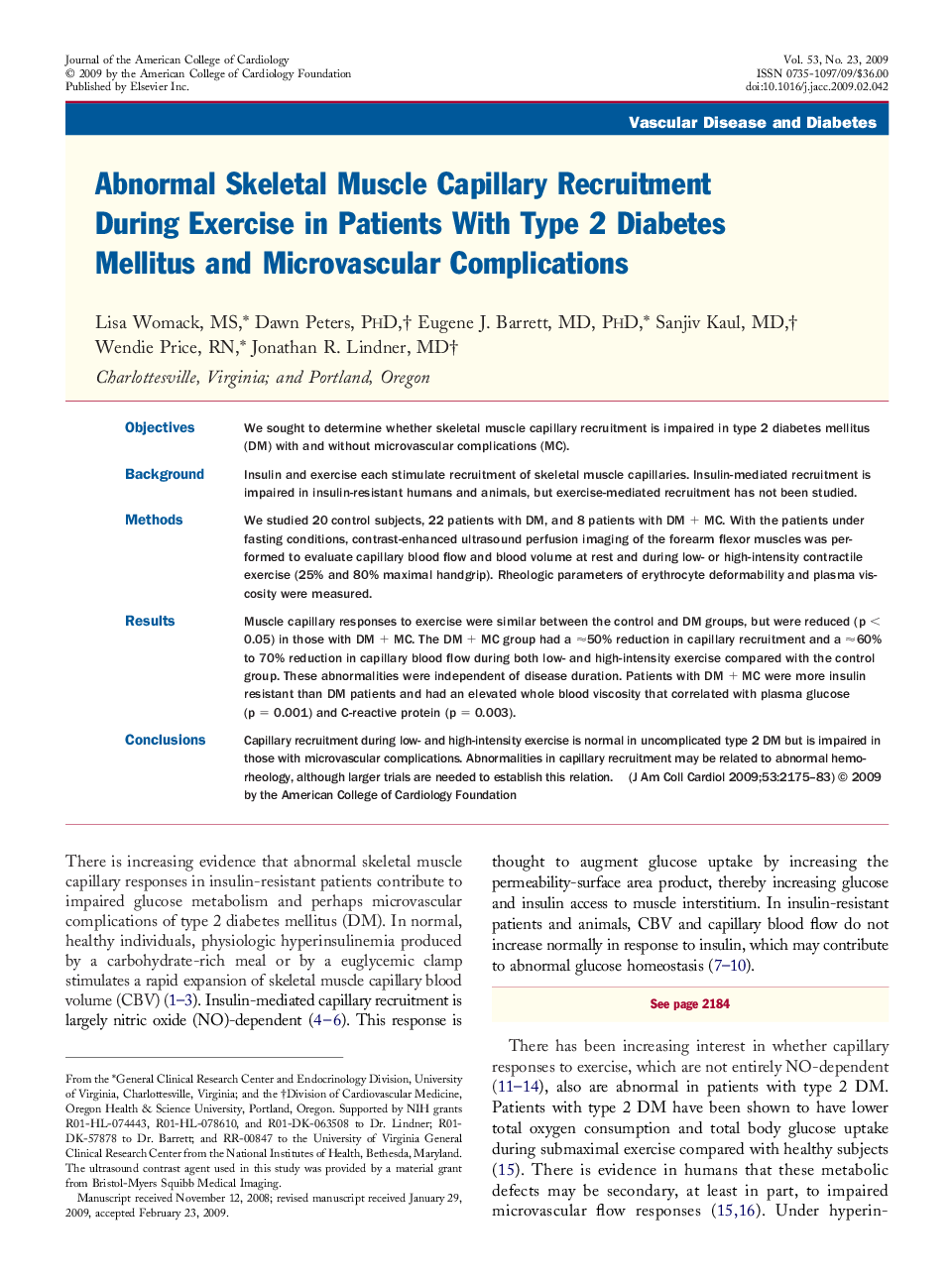| Article ID | Journal | Published Year | Pages | File Type |
|---|---|---|---|---|
| 2951296 | Journal of the American College of Cardiology | 2009 | 9 Pages |
ObjectivesWe sought to determine whether skeletal muscle capillary recruitment is impaired in type 2 diabetes mellitus (DM) with and without microvascular complications (MC).BackgroundInsulin and exercise each stimulate recruitment of skeletal muscle capillaries. Insulin-mediated recruitment is impaired in insulin-resistant humans and animals, but exercise-mediated recruitment has not been studied.MethodsWe studied 20 control subjects, 22 patients with DM, and 8 patients with DM + MC. With the patients under fasting conditions, contrast-enhanced ultrasound perfusion imaging of the forearm flexor muscles was performed to evaluate capillary blood flow and blood volume at rest and during low- or high-intensity contractile exercise (25% and 80% maximal handgrip). Rheologic parameters of erythrocyte deformability and plasma viscosity were measured.ResultsMuscle capillary responses to exercise were similar between the control and DM groups, but were reduced (p < 0.05) in those with DM + MC. The DM + MC group had a ≈50% reduction in capillary recruitment and a ≈60% to 70% reduction in capillary blood flow during both low- and high-intensity exercise compared with the control group. These abnormalities were independent of disease duration. Patients with DM + MC were more insulin resistant than DM patients and had an elevated whole blood viscosity that correlated with plasma glucose (p = 0.001) and C-reactive protein (p = 0.003).ConclusionsCapillary recruitment during low- and high-intensity exercise is normal in uncomplicated type 2 DM but is impaired in those with microvascular complications. Abnormalities in capillary recruitment may be related to abnormal hemorheology, although larger trials are needed to establish this relation.
